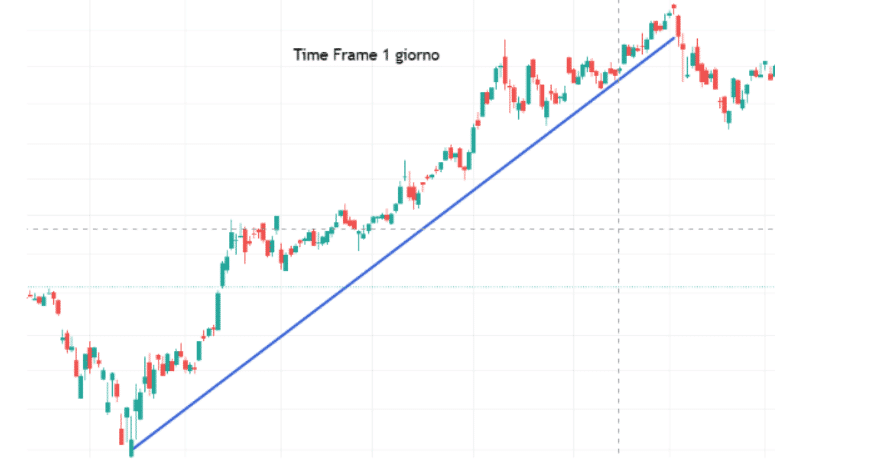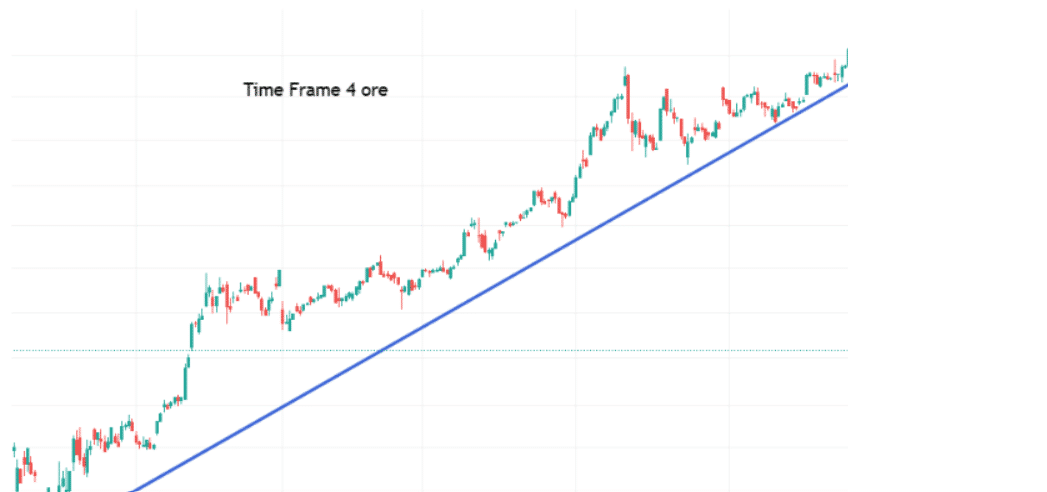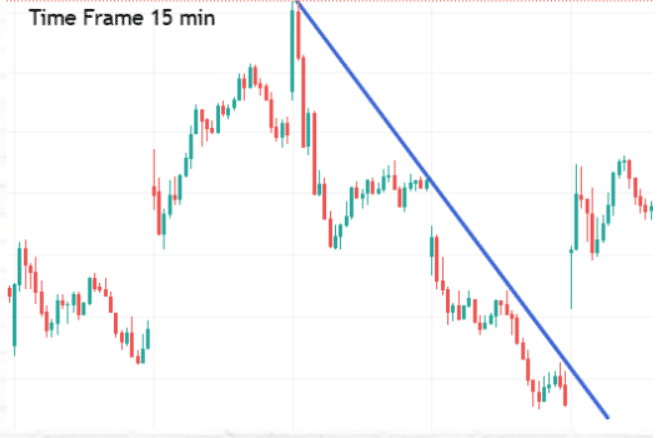Understanding the importance of looking at different time intervals allows us to gain a more comprehensive view of the financial market. We will see how multi-timeframe analysis can help us make informed decisions and develop effective trading strategies.
Whether you are a day trader focusing on short-term operations (using 1-minute, 5-minute, 15-minute charts), an eSwing Tradr concentrating on a 2 to 5-day period, or a long-term “position” trader, you need to have the complete picture.
Most successful traders will look at long-term charts to achieve this balanced perspective before focusing on their preferred time frame. They generally work on this long before taking their positions. It might seem complicated, but essentially it’s quite simple, as our example shows. Essentially, you’re looking at the same chart but at different times to confirm that the trend aligns with the trader.
In our example, you might discover that the 15-minute chart has a strong downward trend. Typically, traders are advised to trade with the trend. However, a daily chart might show an extremely strong upward trend, as the charts indicate.
In this case, you’d think twice before placing a short trade. Usually, traders and investors use 3 time intervals in their analysis. This quest for a broader perspective will aid in successful trading.



Multi-timeframe analysis: Which time frame works best?
After all, there are different time intervals we can work with. Unfortunately, all time frames are delayed, showing us only past prices that might not be indicative of future prices. However, we can choose time intervals favorable to our goals and build an analytical approach to identify the optimal time to employ our strategy and enter trades based on what we want to achieve from the market. If market conditions change, risk and money management can help prevent these reversals from depleting the trader’s account entirely.
Often, traders can get conflicting opinions about different time intervals. While the daily time frame might show an uptrend, the hourly might show a downtrend. This can provide contradictory signals and counterproductive confusion in the trader’s mind as they try to align trades. For this reason, it’s important for the trader to plan the times they want to trade as they build their strategies. In many cases, traders can benefit from using multiple time intervals, trying to incorporate as much information as possible into their analysis. Incorporating a longer time frame will allow the trader to see a “broader picture” so they can get a sense of the “general trends” or sentiments that might exist, while shorter time interval charts can be used to observe more immediate movements. This leads to a very popular permutation of technical analysis where traders incorporate multiple time intervals into their approach.
When using multiple time intervals, it’s important to remember that not all time frames will work together harmoniously. If I’m using the daily chart to read trends but the 1-minute chart to enter trades, there’s a significant disconnect between the two-time intervals. Each daily candle is about equivalent to 1440 1-minute candles, so when I look at the 1-minute chart, I often only see what would constitute, at most, one candle on the daily chart. It would be haphazard to read trends on the daily chart and try to place trades on the 1-minute chart due to this disconnection. We suggest a 1:4 to 1:6 ratio between trend and entry chart when using multi-timeframe analysis.
So, if a trader is trying to enter the hourly chart, the 4-hour chart can be used to ascertain the trend. If a trader wants to enter the 15-minute chart, the hourly chart can be used to understand the sentiment.
In conclusione, la scelta del lasso di tempo migliore per operare nei mercati finanziari è una decisione cruciale per ogni trader. While all time frames can be used, it’s possible to select intervals that align with your objectives and build an analytical approach to identify the optimal time to enter trades.
